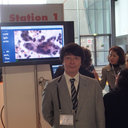A Rare Case of Pediatric Lumbar Spinal Ependymoma Mimicking Meningitis.
Mots clés
Abstrait
Spontaneous acute subarachnoid hemorrhage (SAH) from lumbar ependymoma in children is rare. We report a case of a 14-year-old boy who developed sudden radicular low back pain while playing baseball. He was initially managed conservatively in a local hospital for suspected lumbar disc herniation, but he later developed meningeal symptoms and fever before being referred to our hospital. He underwent a diagnostic lumbar puncture in the emergency department; his cerebrospinal fluid suggested an SAH. Physical examination showed meningeal signs and cauda equina features. Cerebrospinal fluid analysis was negative for bacterial meningitis. Lumbar magnetic resonance imaging revealed a mass characterized as a hemorrhagic lesion. The patient had an emergent evacuation of the mass through the posterior approach. Postoperatively, his symptoms resolved completely. The histologic diagnosis was, surprisingly, an ependymoma (World Health Organization grade II). This case is particularly interesting because of its rarity in children, and its pattern of presentation. Although bacterial or viral meningitis is the most frequent cause of meningeal features in children, SAH from a hemorrhagic spinal tumor should be considered. Ultimately, a high index of suspicion is needed for prompt diagnosis.


